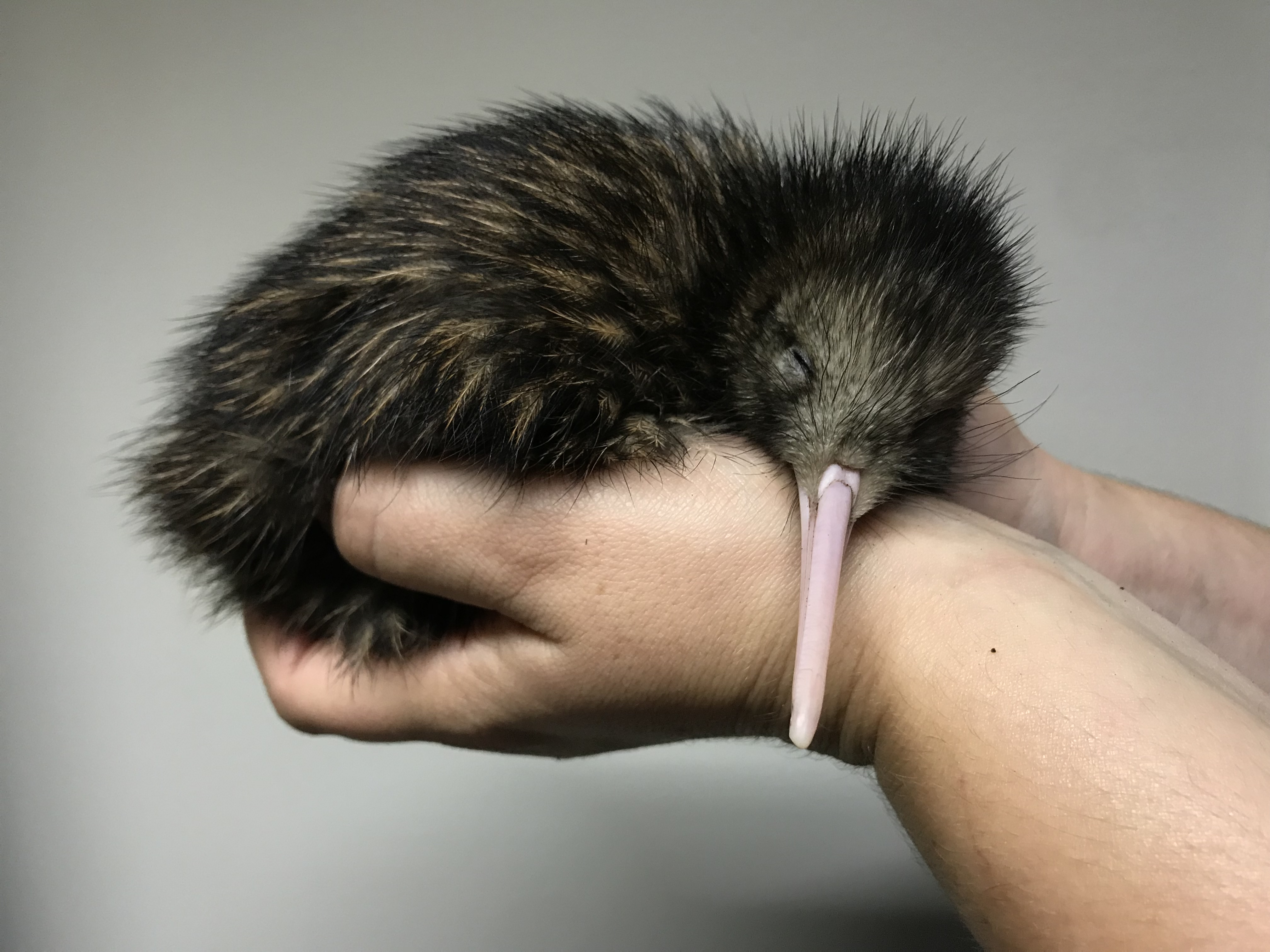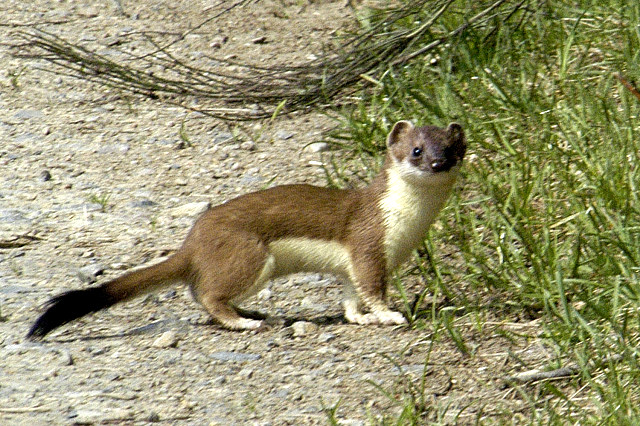|
Motuara Island
Motuara Island is a scenic and historical reserve that lies at the entrance to Queen Charlotte Sound / Tōtaranui. It is notable for the actions of List of New Zealand places named by James Cook, James Cook. During 's stay at nearby Ship Cove (New Zealand), Meretoto / Ship Cove, Cook climbed to the summit of Motuara, and formally (and controversially) claimed it and the adjacent lands in the name of and for the use of the sovereign of the British Empire. The island is in size. means island and is a path; hence, literally means the island in the path (of the canoes). Māori activity at the time of Cook's visits The entrance to the Queen Charlotte Sound / Tōtaranui area was an important point of arrival and departure for the steady flow of trading (canoes) crossing Cook Strait, and Motuara Island was a staging post for people and goods crossing the strait, as well as a trading post for (jade) and (argillite). People resided in (unfortified villages) near food gathering an ... [...More Info...] [...Related Items...] OR: [Wikipedia] [Google] [Baidu] |
Marlborough Sounds
The Marlborough Sounds are an extensive network of sea-drowned valleys at the northern end of the South Island of New Zealand. The Marlborough Sounds were created by a combination of land subsidence and rising sea levels. According to Māori mythology, the sounds are the prows of the many sunken waka of Aoraki. Overview Covering some of sounds, islands, and peninsulas, the Marlborough Sounds lie at the South Island's north-easternmost point, between Tasman Bay / Te Tai-o-Aorere in the west and Cloudy Bay in the south-east. The almost fractal coastline has 1/10 of the length of New Zealand's coasts. The steep, wooded hills and small quiet bays of the sounds are sparsely populated, as access is difficult. Many of the small settlements and isolated houses are only accessible by boat. The main large port is Picton on the mainland, at the head of Queen Charlotte Sound. It is at the northern terminus of the South Island's main railway and state highway networks. The main small-bo ... [...More Info...] [...Related Items...] OR: [Wikipedia] [Google] [Baidu] |
HMS Resolution (1771)
HMS ''Resolution'' was a sloop of the Royal Navy, a converted merchant collier purchased by the Navy and adapted, in which Captain James Cook made his second and third voyages of exploration in the Pacific. She impressed him enough that he called her "the ship of my choice", and "the fittest for service of any I have seen". Purchase and refitting ''Resolution'' began her career as the North Sea collier ''Marquis of Granby'', launched at Whitby in 1770, and purchased by the Royal Navy in 1771 for £4,151 (equivalent to £ today). She was originally registered as HMS ''Drake'', but fearing this would upset the Spanish, she was soon renamed ''Resolution'', on 25 December 1771. She was fitted out at Deptford with the most advanced navigational aids of the day, including an azimuth compass made by Henry Gregory, ice anchors, and the latest apparatus for distilling fresh water from sea water. Her armament consisted of 12 6-pounder guns and 12 swivel guns. At his own expense Coo ... [...More Info...] [...Related Items...] OR: [Wikipedia] [Google] [Baidu] |
Ōkārito
Ōkārito is a small coastal settlement on the West Coast of New Zealand's South Island, southwest of Hokitika, and from . It is built at the southern end of the Ōkārito Lagoon at the mouth of the Ōkārito River. The settlement of The Forks is located just inland, on the banks of the river. Name Ōkārito's name is from the Māori , place of, and , the young shoots of the bulrush or raupō (''Typha orientalis''), a valued food source. Another account has Ōkārito taking its name from a rangatira named Kārito, whose daughters Mapourika and Wahapako gave their names to nearby Lake Mapourika and Lake Wahapo. The settlement's official name has been spelled with macrons over the vowels since 2010, although it is still commonly seen written as "Okarito". History Māori occupation and seasonal harvesting in area began over 600 years ago. The Ōkārito historic gold mining settlement is home to Donovan's Store, the oldest known building on the West Coast, and the Ōkār ... [...More Info...] [...Related Items...] OR: [Wikipedia] [Google] [Baidu] |
Christchurch
Christchurch ( ; mi, Ōtautahi) is the largest city in the South Island of New Zealand and the seat of the Canterbury Region. Christchurch lies on the South Island's east coast, just north of Banks Peninsula on Pegasus Bay. The Avon River / Ōtākaro flows through the centre of the city, with an urban park along its banks. The city's territorial authority population is people, and includes a number of smaller urban areas as well as rural areas. The population of the urban area is people. Christchurch is the second-largest city by urban area population in New Zealand, after Auckland. It is the major urban area of an emerging sub-region known informally as Greater Christchurch. Notable smaller urban areas within this sub-region include Rangiora and Kaiapoi in Waimakariri District, north of the Waimakariri River, and Rolleston and Lincoln in Selwyn District to the south. The first inhabitants migrated to the area sometime between 1000 and 1250 AD. They hunted moa, which led ... [...More Info...] [...Related Items...] OR: [Wikipedia] [Google] [Baidu] |
Willowbank Wildlife Reserve
Willowbank Wildlife Reserve is a wildlife park and nature reserve in Christchurch, New Zealand. As well as having public displays of various animal species it also carries out of native species including , kiwi, [...More Info...] [...Related Items...] OR: [Wikipedia] [Google] [Baidu] |
Westland District
Westland District is a Districts of New Zealand, territorial authority district on the West Coast, New Zealand, West Coast of New Zealand's South Island. It is administered by the Westland District Council. The district's population is History Westland was originally a part of Canterbury Province, administered from Christchurch in the East coast. The booming population as a result of the gold rush, together with the difficulty of travel and communication across the Southern Alps, led first to the creation of a special Westland County, then the formal separation of Westland from Canterbury to form the short-lived Westland Province (1873–1876). Westland Province also included what is now the southern portion of Grey District with the provincial boundary at the Grey River (New Zealand), Grey and Arnold River (New Zealand), Arnold rivers. Greymouth proper was in Westland Province, Cobden, New Zealand, Cobden, on the north bank of the Grey River, was in Nelson Province . After the ... [...More Info...] [...Related Items...] OR: [Wikipedia] [Google] [Baidu] |
Stoat In New Zealand
The stoat (''Mustela erminea'') was introduced into New Zealand to control introduced rabbits and hares, but is now a major threat to the native bird population. The natural range of the stoat is limited to parts of the Northern Hemisphere. Immediately before human settlement, New Zealand did not have any land-based mammals apart from bats, but Polynesian and European settlers introduced a wide variety of animals. Rarely, in Southland, the fur of stoats has been reported to turn white, being the fur known as ermine, which adorns royal robes. Introductions of stoats The rabbit was introduced by European settlers as a food and game animal, and by the 1870s it was becoming a serious threat to the newly developed farming economy. Farmers began demanding the introduction of mustelids (including stoats) to control the rabbit plague. Warnings about the dangers to bird life from stoats were given by scientists in New Zealand and Britain, including the New Zealand ornithologist Walter B ... [...More Info...] [...Related Items...] OR: [Wikipedia] [Google] [Baidu] |
Fantail
Fantails are small insectivorous songbirds of the genus ''Rhipidura'' in the family Rhipiduridae, native to Australasia, Southeast Asia and the Indian subcontinent. Most of the species are about long, specialist aerial feeders, and named as "fantails", but the Australian willie wagtail is a little larger, and, though still an expert hunter of insects on the wing, concentrates equally on terrestrial prey. The true wagtails are part of the genus '' Motacilla'' in the family Motacillidae and are not close relatives of the fantails. Description The fantails are small bodied (11.5–21 cm long) birds with long tails; in some species the tail is longer than the body and in most the tail is longer than the wing.Boles, W.E. (2006). Family Rhipiduridae (Fantails). Pp 200-244 in: del Hoyo, J., Elliott, A. & Christie, D.A. eds (2006) ''Handbook of the Birds of the World''. Vol. 11. Old World Flycatchers to Old World Warblers. Lynx Edicions, Barcelona. When the tail is folded it is ... [...More Info...] [...Related Items...] OR: [Wikipedia] [Google] [Baidu] |
Tūī
The tūī (''Prosthemadera novaeseelandiae'') is a boisterous medium-sized bird native to New Zealand. It is blue, green, and bronze colored with a distinctive white throat tuft. It is an endemic passerine bird of New Zealand, and the only species in the genus ''Prosthemadera''. It is one of the largest species in the diverse Australasian honeyeater family Meliphagidae, and one of two living species of that family found in New Zealand, the other being the New Zealand bellbird (''Anthornis melanura''). The tūī has a wide distribution in the archipelago, ranging from the subtropical Kermadec Islands to the sub-Antarctic Auckland Islands, as well as the main islands. Taxonomy The bird's name comes from the Māori language. The plural is ''tūī'' in modern New Zealand English, or ''ngā tūī'' in Māori usage; some speakers still use the '-s' suffix to produce the Anglicised form ''tūīs'' to indicate plurality, but this practice is becoming less common. For many years the ... [...More Info...] [...Related Items...] OR: [Wikipedia] [Google] [Baidu] |
New Zealand Bellbird
The New Zealand bellbird (''Anthornis melanura''), also known by its Māori names korimako, makomako, and kōmako, is a passerine bird endemic to New Zealand. It has greenish colouration and is the only living member of the genus ''Anthornis''. The bellbird forms a significant component of the famed New Zealand dawn chorus of bird song that was much noted by early European settlers. The explorer Captain Cook wrote of its song "it seemed to be like small bells most exquisitely tuned". Its bell-like song is sometimes confused with that of the tūī. The species is common across much of New Zealand and its offshore islands as well as the Auckland Islands. Description Males are olive-green with a dark purplish sheen on their head and black outer wing and tail, while females are a duller olive-brown with a blue sheen on the head and yellowish-white curving from the base of the bill to below the eye. Both have a notably red eye. They are about 17–20 cm from the tip of their bea ... [...More Info...] [...Related Items...] OR: [Wikipedia] [Google] [Baidu] |
Grey Warbler
The grey warbler (''Gerygone igata''), also known by its Māori name or outside New Zealand as the grey gerygone, is an insectivorous bird in the family Acanthizidae endemic to New Zealand. Its natural habitat is temperate forests. It is sometimes known as the teetotum or rainbird.Grey warbler - New Zealand Birds Online http://nzbirdsonline.org.nz/species/grey-warbler Description One of the smallest birds found in New Zealand, grey warblers are about 11 centimeters long, with a weight of up to 6.5 grams. It has grey-brown plumage (with a slight olive-green tint), with the face, throat and breast being pale-grey. The abdomen is off-white with a slight yellow tinge. The tail is white underneath and dark brown on top with white tips being visible in flight. They also have a distinctive ruby-red eye. Females are typically smaller than the male, but otherwise there is little sexual dimorphism. The young are paler with no hint of yellow and have brown eyes. Song The male's song ofte ... [...More Info...] [...Related Items...] OR: [Wikipedia] [Google] [Baidu] |




.jpg)

